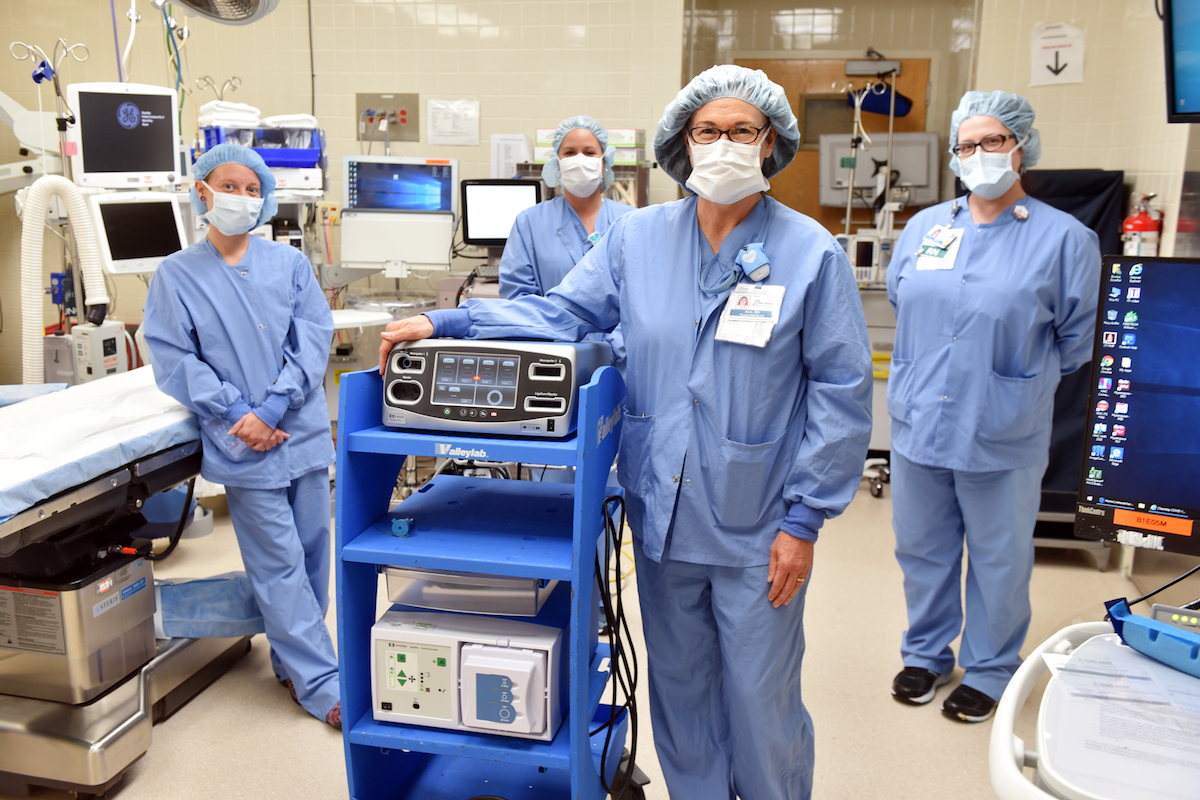More than a year ago, Ann Hanson, a nurse in the Backus Hospital operating room, saw a lot of literature coming from professional organizations about reducing surgical smoke in operating rooms for the health of both staff and patients.
The Rhode Island state legislature passed a law around the same time mandating that hospitals reduce or eliminate surgical smoke, a byproduct of energy-generating devices — such as electrosurgery units, lasers, ultrasonic devices, powered surgical instruments — during a procedure. Surgical smoke can carry microscopic levels of toxic gases, viruses, cells and blood.
“I thought, ‘Eventually we are going to have to do this, so why not be proactive?’” Hanson said. “It would make the hospital safer for staff and patients.”
In spring 2019, Hanson brought the proposal to her supervisors, who embraced it. A volunteer group created a series of educational presentations on the hazards of surgical smoke and how it can be reduced for nurses, physicians, surgical technologists and other staff.
Some equipment, such as smoke evacuation units, and related supplies were purchased. Physicians also have been testing cauterizing tools to find the best ones for both performance and low smoke. Hanson estimates that cauterization occurs in about 85 percent of procedures in the 12 operating rooms and two C-section rooms at Backus.
“I’m very happy with the result,” Hanson said. “The system has been fully implemented, all the staff is educated and we’ve had buy-in from the physicians. We are at 90 percent to 100 percent levels of smoke evacuation.”
The team at Backus did so well, in fact, that it recently received the highest rating from the Association of periOperative Registered Nurses (AORN) in its Go Clear Award program. The AORN Go Clear Award Program is a comprehensive surgical smoke-free recognition program for facilities who want to ensure a smoke-free environment. AORN says more than 500 surgical units across the country have joined the program.
In the photo above, Hanson (foreground) stands in Backus Hospital Operating Room 1 with some of the smoke-evacuation equipment. Others involved in the efforts, back row from left, include Sheena Morgan, CST; Kerri Scarchilli, RN, and Maria Amaral, RN.


